US, Brazil Discuss Iran's 'Destabilizing' Activities in Latin America
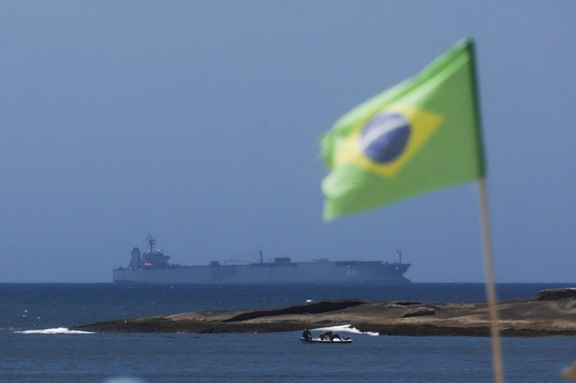
The Biden administration's acting special envoy for Iran says he has discussed Tehran's "destabilizing" activities in South America during a visit to Brazil.

The Biden administration's acting special envoy for Iran says he has discussed Tehran's "destabilizing" activities in South America during a visit to Brazil.
In a post on his X account on Tuesday, Abram Paley said he's returned from Brazil where he had "constructive meetings with officials on our concerns about the destabilizing activities of Iran and its proxies in the region, sanctions enforcement, CT cooperation and our shared nonproliferation goals."
The Islamic Republic’s activities in the Americas have stirred concerns especially after its warships docked in Brazil last year, making Iran’s presence a little too close for comfort to the Biden administration.
With Brazil refusing to join the US in sanctioning Iran, dating back to 2010, options are running out as to how one of the world’s biggest powers, can fight the threat of Iran looming closer to its shores with a lack of legal mechanisms in place.
President Luiz Inacio Lula da Silva's government was urged by the Biden administration to send the Iranian warships -- IRIS Makran and IRIS Dena -- away in January 2023, but it finally bowed to Tehran, allowing them to dock in February.
The presence of the Islamic Republic in Latin America has been a growing concern for the US in recent years with several Congressional reports presented in different Senate and House committees detailing Iran’s influence in the region.

The UN’s International Atomic Energy Agency reportedly paid hard cash to a US sanctioned Iranian regime atomic weapons scientist in Vienna in early 2022 and sent Tehran-controlled nuclear researchers to Russia for training.
The mass circulation German tabloid Bild on Sunday reported that it obtained “confidential files" of the Iranian atomic program.
The Bild wrote “As the documents show, representatives of the UN agency met with Javad Karimi-Sabet in Vienna in early 2022…. Karimi-Sabet has been on a US sanctions list since 2020 and is considered one of the masterminds in the development of the Iranian atomic bomb. According to internal emails, the IAEA paid Karimi at the meeting. Since a bank transfer was not possible due to the sanctions, the scientist was paid the money in cash.”
Karimi-Sabet is the vice chairman of the Atomic Energy Organization of Iran (AEOI).
The IAEA told the Bild that US sanctions are not applicable to its work and did not deny the payment.
“As part of the United Nations (UN) system, the IAEA follows the UN sanctions regulations and does not implement national sanctions regulations, “noted the IAEA.

When asked about the Bild story, which was headlined “Did the UN help the mullahs build the atomic bomb?, David Albright, one of the world’s leading experts on the Islamic Republic of Iran’s illicit nuclear program, told Iran International “I do not agree with the claim that the IAEA is contributing to Iran's nuclear weapons program. Nonetheless, there are many issues with the IAEA's technical support programs when it comes to states violating their safeguards agreements in fact or by intention. Today, Iran should not be benefiting from IAEA technical support programs.”
Albright, physicist and founder and president of the Institute for Science and International Security in Washington, D.C., added “The visit by Karimi is deeply troubling because of his role in establishing Iran's centrifuge program. See photo from our website from earlier days; In this picture from 2008, President Ahmadinejad holds a carbon fiber rotor tube; visible is also a bellows. Karimi is standing to the left of Ahmadinejad, who was touring Natanz. Karimi is likely still working on centrifuges, based on some of his recent publications. “
Albright added Karimi-Sabet “worked in other sensitive nuclear areas, not just on centrifuges.”
The Bild reported that the confidential documents revealed that the IAEA launched funding programs for Iranian nuclear science. The IAEA said, according to Bild’s information, that project “IRA2018001” was coordinated with the Iranians in 2019, with the aim of “Improving the skills and knowledge of scientists and improving the hardware and software infrastructure, which contribute to improving the operation and use of research reactors.”
The paper added “The IAEA also financed numerous training programs for scientists from Tehran in Russia…selected experts were sometimes under the wing of Putin's Rosatom for weeks - the state authority is also responsible for the civil and military use of nuclear energy.”
An IAEA spokesman confirmed the training to the Bild; "The IAEA's Technical Cooperation (TC) program supports member states in (...) development and management of nuclear knowledge." The IAEA added that it ensured that the Iranian participants did not obtain knowledge about nuclear weapons during the training.
Ukraine’s president has long suspected that the quid pro quo between Iran and Russia entailed Tehran receiving support for its atomic weapons program from Moscow in exchange for providing lethal drones to Russia in its illegal war to conquer the Ukraine.
Separately but related, in March, 2023 Fox News Digital reported that the clerical regime in Tehran allegedly secured secret deals with Russia to guarantee deliveries of uranium.
According to the Fox News article, Putin agreed to return enriched uranium that it received from Iran if a prospective nuclear deal collapses. According to the intelligence officials cited in the Fox report, the Iranians exploited the opportunity during Putin’s pressing need for drones and demanded a "nuclear guarantee" that would enable Iran "to quickly restore its uranium stock to the quantity and enrichment levels it had maintained before the resumption of the agreement."
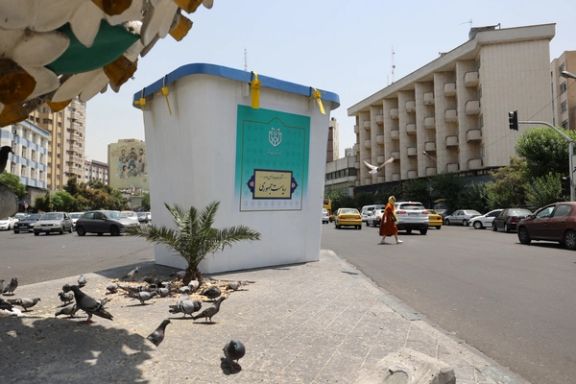
Experiencing tightly controlled and unfree elections for five decades, most voters in Iran have realized since 2020 that they do not have a meaningful role in electing their president or members of parliament.
The most significant reasons for the declining trust include the mass disqualification of candidates by the unelected 12-member Guardian Council, the use of tens of thousands of mobile ballot boxes (up to one-third), voting in military barracks, and the involvement of dirty and non-transparent money.
Although many were aware of the undemocratic nature of elections long before, participation rates in some periods reached more than two-thirds of eligible voters, such as in 1997 and 2013. One of the main reasons for this high participation was the government’s propaganda machine, which effectively "heated up the election."
There are three main methods. The first is dedicating significant airtime on state TV and radio stations, which have dozens of networks, to election-related content to encourage participation. This includes debates between candidates, interviews with them, and election roundtables, all orchestrated by government outlets. For the 2024 elections, the candidates and their consultants have dozens of introductory interviews, and panel discussion programs, other than five collective debates.

The second method involves billboards and banners funded by public resources, displayed throughout cities and along roads across the country. These advertisements use quotes from Shia saints, leaders of the Islamic Republic, and celebrities who cooperate with the government to encourage voter participation. These ads are displayed alongside the individual advertisements of the candidates.
However, the most effective method of attracting silent majority voters is to amplify the voices of university professors (especially those residing in Western countries), non-conformist celebrities, and figures occasionally critical of regime policies. This approach helps bring a segment of the undecided population to the polls. Typically, the opinions and positions of these figures, which are not necessarily independent, are not featured by government-controlled outlets during ordinary times.
However, the effectiveness of these methods has waned since the February 2020 parliamentary elections, followed by the presidential vote in 2021 and the second parliamentary election in March 2024. Turnout in these elections was significantly below 50%, according to official figures, which many believe are inflated to portray a more favorable picture.
“A new wave of hope”
During electoral campaigns, supporters of the Islamic Republic have employed three tactics both inside and outside the country to encourage voter turnout.
The first tactic involves instilling misleading hopes in a society desperate for change. "With the announcement of the names of the approved candidates, a new wave of hope has flowed through Iranian society. If political groups use it correctly and follow the right principles, we will have one of the most refreshing choices in the history of Iran since Mr. Khatami," said Saeed Leilaz, a high-ranking member of a 'reformist' party within the Reform Front, supporting the 'moderate' candidate Masoud Pezeshkian.
President Mohammad Khatami (1997-2005) aimed to reform some notorious characteristics and undemocratic practices of the Islamic regime but was stopped by conservatives supported by Supreme Leader Ali Khamenei and the Revolutionary Guard. The same scenario repeated itself during the eight years of relatively moderate Hassan Rouhani (2013-2021), who was constantly pummeled by hardliners.
Leilaz believes 40 million people may participate in this election. Of course, according to the IRNA news agency, based on the content analysis of people's posts on Instagram pages of "about 31 million active users" the electorate has not become mobilized for the election.
Abbas Abdi, one of the leftist figures of the Khomeini era and a leading figure among the students who took the American Embassy staff hostage for 444 days, also repeated the above hope: "The elections of June 28, 2024, can create a social wave with over 60% participation," Abdi predicts, though he does not specify which poll supports this claim. He emphasizes Pezeshkian’s personality rather than his executive performance or experience, which is not particularly notable: "The most important and outstanding feature of him... is that he is an honest person who does not lie, and this is a rare quality among Iranian officials, and people are very hungry for that."
Abdi and Leilaz spent time in prison just for expressing their views in the past, which has made their voices to be heard outside the ruling elite.
“Surprising decision of the Guardian Council”
The second tactic used to stir up election enthusiasm is to portray the Guardian Council's decision to approve Pezeshkian as a surprising move, framing him as a reformist candidate to attract those who still believe in reforms within the regime.
Pezeshkian, who is known more as a ‘reformist’ than a conservative is the only non-hardliner candidate approved by the Guardian Council. All sorts of regime supporters, including some individuals in the United States, portray his candidacy as a good omen showing the Islamic Republic’s goodwill. However, in the past eight days after his candidacy was approved, Pezeshkian has come across more as a conservative loyal to Ali Khamenei than a reformist.
“Not voting is not a political act”
The third tactic is to frame non-participation not as a protest, but as an apolitical act. "I don't consider not voting to be a political act," an American-Iranian supporter of the Tehran government said on social media. This viewpoint fails to distinguish between democratic and totalitarian regimes. In totalitarian regimes, not voting can lead to the loss of certain rights, such as employment in government affairs. Therefore, abstaining from voting is a costly political act. In fact, the decline in election turnout in the past four years has shaken and weakened Islamic Republics claims of legitimacy.
The opinions expressed by the author are not necessarily the views of Iran International.
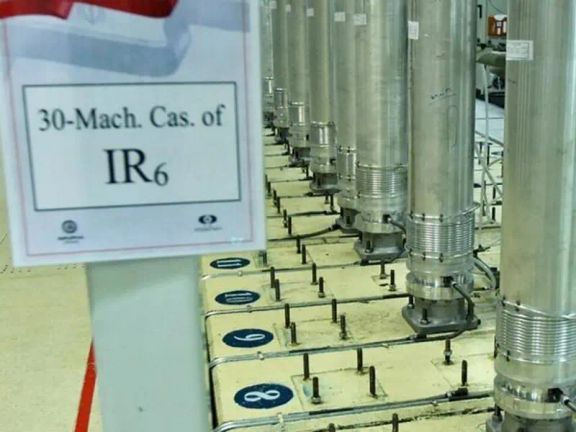
US and Israeli intelligence agencies are investigating new computer modeling by Iranian scientists which could potentially be used for the research and development of nuclear weapons.
According to reports from Axios citing two US officials and Israeli counterparts, the purpose of the modeling remains unclear, fueling concerns on the back of the UN's nuclear chief warning Iran is "weeks not months" away from a nuclear weapon.
A critical meeting takes place at the White House this Thursday where senior US and Israeli officials will convene for the first detailed discussion on the Iranian nuclear program since March 2023. It is part of the US-Israel strategic consultative group (SCG), aiming to evaluate the recent intelligence and coordinate responses.
The UN recently admitted it had lost "continuity of knowledge" on Iran's program as the country continues to evade inspectors gaining full access.
The International Atomic Energy Organization has observed that Iran is installing more uranium enrichment centrifuges at its Fordow facility, reaching enrichment levels of up to 60 percent purity, alarmingly close to the 90 percent required for nuclear weapons.
In March, the E3 - the UK, France and Germany - warned that Iran has "pushed its nuclear activities to new heights" in spite of global sanctions, pointing out that over the past five years, the levels of the country's enrichment “are unprecedented for a state without a nuclear weapons program" as Iran continues to deny intentions of nuclear armament.
Ali Shamkhani, advisor to the Supreme Leader and apparent nuclear negotiator, stated last week that Iran "won't bow to pressure" amidst US warnings regarding its uranium enrichment activities.
Defiantly, he wrote on X, “The US and some Western countries would dismantle Iran’s nuclear industry if they could.”

Four deaths were reported after a 5.0 magnitude earthquake hit Kashmar in northeastern Iran's Razavi Khorasan province around noon on Tuesday.
Governor of Kashmar, Hojjatollah Shariatmadari said that in Tuesday's earthquake in the city, 120 people have also been injured, with 35 of them hospitalized.
According to the US Geological Survey, the earthquake originated approximately five kilometers from Moghan, Razavi Khorasan Province, while local Iranian media reported the magnitude as 5.0, occurring at a depth of six kilometers.
Iran, which is situated on significant fault lines, experiences frequent seismic activity. A notable example occurred in November when a powerful 7.3 magnitude earthquake struck near the Iraqi border, resulting in over 530 fatalities and thousands of injuries.
Iran experiences an average of 10,000 earthquakes per year, according to the UN with the country still reeling from the tragedy of 2003 when a 6.6-magnitude earthquake devastated the historic city of Bam, claiming the lives of tens of thousands.
Last year, at least three people died with over 800 injured after a 5.9 magnitude earthquake hit the city of Khoy, West Azerbaijan province.
At the time of the quake in January, the Mehr news agency said 70 villages had been damaged.
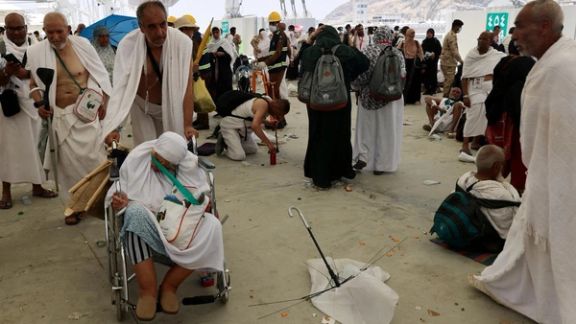
The death toll among Iranian pilgrims participating in this year's Hajj in Saudi Arabia has risen to 11 as extreme heat and crowding see fatalities mounting.
Pirhossein Koolivand, the head of the Iranian Red Crescent, confirmed on Tuesday that an additional 26 pilgrims are currently receiving medical treatment in Saudi hospitals in addition to those who have died at the annual religious event.
Koolivand said the pilgrims' health status is "good and suitable", claiming that medical staff dispatched from Iran to accompany pilgrims attended to over 11,000 cases.
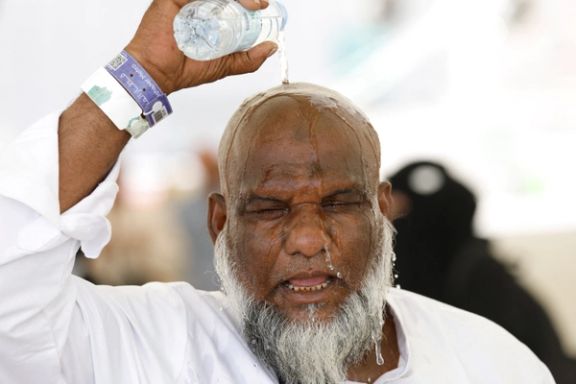
On Sunday, Mohammed Al-Abdulaali, a spokesman for Saudi Arabia's Health Ministry, said in one day, over 2,760 pilgrims experienced sunstroke and heat stress at the Hajj attracting around 1.8 million to Mecca in Saudi Arabia.
To combat the mass of yearly deaths that occur, Saudi officials have implemented several safety measures, such as climate-controlled environments and extensive medical services, mitigating the health dangers associated with the extreme heat.
Last year, the pilgrimage saw as many as 240 deaths, with temperatures soaring to about 48 degrees Celsius.